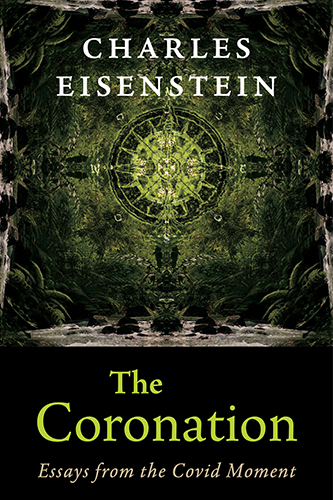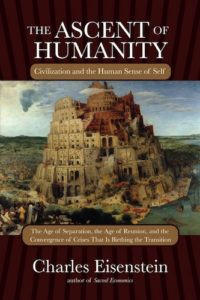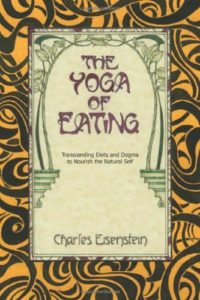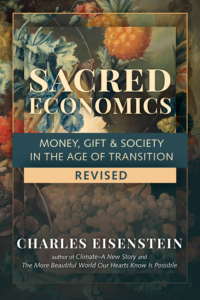The More Beautiful World Our Hearts Know Is Possible
Chapters
Chapter 7: Science
Our conception of what is “practical” harbors a trap. “Practical” encodes the laws of cause and effect that the old world has handed us, and according to those laws, nothing we do can possibly be enough to create a more beautiful world, or even to much ameliorate the awfulness of this one. The crises are too great, the powers-that-be too strong, and you are just one tiny individual. If even the most powerful of our system, the Presidents and CEOs, feel at the mercy of forces greater than themselves, constrained by their roles and job descriptions, so much the more powerless are we.
It is no wonder, then, that so many activists sooner or later come to grapple with despair. They might say, “When I was young and idealistic, I poured limitless energy into tackling problems, but eventually I realized just how big the problems were, and just how powerful the resistance to change. Nothing I can do can possibly be enough.” In other words, they have tried and exhausted everything in the category of practical.
The question before us, then, is what do we do when in the big picture, nothing practical is practical? Obviously, we are going to have to do things that are not practical according to our customary understanding.
Here is a crucial point: Our customary understanding of what is practical is grounded in a worldview, a mythos, that is rapidly becoming obsolete. Furthermore, that obsolescing worldview is precisely the one underlying the old world we strive to change. In other words, the crisis of civilization and the despair over the crisis share a common source.
You might say that the despair we face when we recognize the futility of the technologies of separation to solve the crisis of separation is a sign of the fulfillment of the Age of Separation. It marks a turning point: we give up in despair and something new becomes available. The old story has finally reached the end of its telling, and the space is clear for a new story to emerge. This cannot happen while the old story still carries hope. If anything in the old world’s “practical” still has any hope of succeeding, that means the old story has life in it still. That’s why “near term extinction” arguments like those of Guy McPherson are valuable. Irrefutable on their own terms, they vanquish any hope within those terms, which encode the narrow view of the possible implicit in the Story of Separation.
Now, I am not suggesting that we abjure anything that makes sense in the old story just because it is of the old story. The new does not negate the old, but contains and supersedes it. My point is, though, that if we are limited to those things, the task before us is impossible. To those in or nearing the despair state, any effort to change the world seems hopelessly naive.
There is a vast territory on the other side of despair, a new story of the world that births a radically different understanding of cause and effect, but this territory is invisible from the other side, although we may get occasional glimpses of it, premonitions. Within its logic, our situation is not hopeless at all.
Where do our notions of practicality, realism, and causality come from? They are grounded in physics. The Story of Separation and the program of control that stems from it is breaking down, personally and collectively, not only because it is becoming decreasingly effective, not only because our crises are collapsing our confidence in our world-creating myths. While all this is happening, the scientific underpinnings of separation are crumbling as well. These profound paradigm shifts offer a different conception of the nature of self, of the universe, and therefore of how things happen and what is practical. These developments on the cutting edge of physics, biology, and psychology are hugely important for how we behave as social, economic, and political beings. They aren’t just interesting curiosities. In fact, I would go so far as to say that no movement to change the world can possibly succeed unless it draws from these deeper paradigm shifts.
First is the breakdown in the neo-Darwinian orthodoxy that says that well-defined sequences of DNA called genes have evolved by random mutation and natural selection, and that these genes essentially program living organisms to maximize reproductive self-interest. Now we are learning that this account holds only in a very narrow realm: macroevolution happens not through random mutation, but rather through symbiotic merger, through acquisition of exogenous DNA sequences, and through organisms’ cutting, splicing, and recombining of their own DNA. It also happens through cellular and epigenetic inheritance. The lack of any interest-maximizing discrete and separate self on the genetic level negates a primary metaphoric foundation of our Story of the Self. The genetic self has fluid boundaries. It is a chimera resulting from an ongoing exchange of DNA and information with other organisms and the environment. It is not that there are no boundaries of self; it is that these boundaries are changeable, and that the self within these boundaries is changeable as well.
Moreover, the study of ecology is teaching us that species evolve not only to serve their own genetic self-interest (itself hard to define when organisms can reengineer their own genes), but that they also evolve to serve the needs of other species and the whole. This would not have been surprising to cultures who were close to nature, who knew that each species had a unique and necessary gift, but science has come to understand that only in the last generation: to understand, for instance, that if one species goes extinct the whole ecosystem is just that much more fragile. It is not that the rest are better off, absent a competitor. The interest of each is the interest of all.
An even deeper challenge to the old Story of the World is the quantum revolution in physics, more than eighty years old now but so foreign to the scientific assumptions of the preceding centuries and to our dominant Story of the World that we find it terribly counterintuitive and “weird” to this day. I hesitate to venture into this territory because the wanton use of the word “quantum” to imbue a scientific cachet into all manner of questionable ideas and products has rendered the word almost meaningless. Nonetheless, quantum phenomena so flagrantly violate the basis of “practicality” as I’ve described it that a short explanation is in order. Please understand that I am invoking quantum mechanics not as a proof of any assertion in this book, but rather on a mythopoetic level, as a source of intuition and metaphor.
A basic principle, expounded earlier, of the Newtonian universe is that things don’t “just happen” without a cause. (You have to make it happen.) But in the quantum world, this is simply not true. Rather than being fully determined by the totality of forces bearing upon them, quantum particles like photons and electrons behave randomly. In aggregate, one may calculate the probable distribution of their behavior, but for any given photon, a complete account of every physical influence upon it is insufficient to predict its behavior. Photon A might go through the slit and end up here; photon B might end up there—why? There is no reason, no cause; physics therefore calls the behavior random. Here, at the very basis of our explanation of physical reality is acausality. Things can happen without any force making them happen.
The above account, though suitably simplified, is beyond dispute; physics has tried and failed to preserve determinism for ninety years. The situation has not improved since Einstein’s famous protest, “God does not play dice with the universe.” Unable to remove indeterminacy altogether, physics had to settle for burying it safely in the microcosm: random quantum behavior adds up in the aggregate to approximate the determinate, causal behavior of the human world, in which, as before, nothing happens without some force being responsible.
Why does one photon go here and one go there, if not compelled by some force? Well, why do you do one thing rather than another, if not compelled by some force? You choose, so the obvious intuitive answer is that the photon chooses its course. Physics, of course, cannot countenance such an answer, so far outside the scope of scientific thought it is as to be beyond laughable. Physics—and remember, physics lies at the foundation of our Story of the World, of what is real, what is practical, how things work—says instead that the behavior is “random,” preserving, at the price of acausality, a universe of unconscious, generic building blocks. For indeed, to ascribe choice to something as humble as a photon or an electron would be to acknowledge our universe as intelligent through and through. No longer would the universe be just a bunch of stuff; no longer would we so cavalierly arrogate to ourselves the role of its lords and masters. The core project of our Story of the People would be shaken to its foundation.
Let us pause to note that most people who have ever lived on Earth would have no trouble believing that the universe is intelligent through and through. Premodern people, animists or panentheists, ascribed sentience to all beings, not only plants and animals but even rocks and clouds. Young children in our own society tend to do the same. We call it personification or projection, and think that we know better than children and animists that, actually, the universe is mostly a dead, insensate place.
Maybe you don’t want your accessing of expanded creative power to depend on accepting the proposal that even electrons bear sentience. Okay, fine—I won’t insist. Here at least is a place where force is not the cause of behavior. Moreover, modern physics offers a second, perhaps even more severe, challenge to the Story of Separation: the breakdown of the basic self/other distinction.
We are accustomed to a universe in which existence occurs against a backdrop of an objective Cartesian coordinate system of space and time. If something exists, it occupies a point X, Y, Z, at time T, and this existence is independent of you, me, or any other being in the universe. Even if we know about the quantum measurement paradox or entanglement, the assumption of objectivity is woven so deeply into our perceptions that to deny it is laughable. Say you go to bed before the election results come in. You wake up the next morning. Who won? You may not know yet, but you wouldn’t deny that it has already been decided, that there is a fact of the matter that exists independently of your knowledge. Or say that you are investigating a traffic accident. Each party to the accident has a different version of what happened. Would you deny that there is a reality, independent of their stories, consisting of what “actually happened”?
I would not indulge in these ontological musings at all, if it were not for the fact (the fact!) that the old, inaccurate Story of Being, the separate self marooned in an external objective universe, is a recipe for impotence and despair. Separate from the world, nothing we do can matter very much. In the vast, uncoordinated melee of separate selves and impersonal forces that compose the universe, our ability to change the course of events depends on the amount of force we can muster (or inspire, if only others would listen. And being separate from us, their choices are beyond our control—unless we make them listen. Back we are again to force). In particular, this story devalues most of the small, personal acts of service that we experience, on the feeling level, as important and that characterize the kind of world we would like to live in.
For example, in the world of separation, if you want to change the world, stop global warming, or save the sea turtles, then it would be a waste of time to volunteer at a hospice, rescue a lost puppy, or give food to a homeless person. That old lady is going to die anyway. What does it matter if her passing is a little more comfortable? Maybe you should have spent those hours educating the young to imbue them with ecological awareness.
To base our decisions on their calculable, measurable effects is itself part of the Story of Separation. We might call it instrumentalism, and it rests on the belief that our understanding of causality is complete—that we can know with reasonable certainty what the full effects are going to be. But this certainty is increasingly unjustified. Science preserved it for a while by relegating quantum indeterminacy to the microcosm, by ignoring the full significance of nonlinear dynamics with its order out of chaos, and by denying any phenomena that bespeak an intelligent, interconnected universe, but today it becomes harder and harder to hold this edifice together.
Even if the intended effect is something noble, the instrumentalist mindset alienates us from other sources of knowledge and guidance that make sense only within a different Story of Self and World. And it can lead to monstrous results. Who knows who or what we must sacrifice for “the cause”?
Orwell made this point in Nineteen Eighty-Four when O’Brien, the Party official, is pretending to recruit Winston into the revolutionary Brotherhood that seeks to topple the Party:
“You are prepared to give your lives?”
“Yes.”
“You are prepared to commit murder?”
“Yes.”
“To commit acts of sabotage which may cause the death of hundreds of innocent people?”
“Yes.”
“To betray your country to foreign powers?”
“Yes.”
“You are prepared to cheat, to forge, to blackmail, to corrupt the minds of children, to distribute habit-forming drugs, to encourage prostitution, to disseminate venereal diseases—to do anything which is likely to cause demoralization and weaken the power of the Party?”
“Yes.”
“If, for example, it would somehow serve our interests to throw sulphuric acid in a child’s face—are you prepared to do that?”
“Yes.”
Winston, it is shown, is really no different from the Party in putting an abstract and unreachable goal ahead of any means. It is significant that the Brotherhood is phony, a fabrication of the Party; it is the Party. In the same way, only perhaps more subtly, the social or environmental crusader who sacrifices human values for the cause is no true revolutionary at all, but the opposite: a pillar of the system. We see again and again, within environmental organizations, within leftist political groups, the same bullying of underlings, the same power grabs, the same egoic rivalries as we see everywhere else. If these are played out in our organizations, how can we hope that they won’t be played out in the world we create, should we be victorious?
Some groups, recognizing this, devote much of their time to group process, seeking to implement within their own organizations the egalitarian, inclusive goals they are striving to bring to society. The danger is that the group becomes all about itself and fails to accomplish any external goals. Many Occupy groups experienced this tendency. Nonetheless, these efforts to work out new principles of organization and consensus signify a growing realization of the unity of the internal and the external. It isn’t simply about demonstrating one’s virtue by being egalitarian or inclusive. It is that who we are and how we relate affect what we create.
Endnotes:
5. I lay out some of the scientific foundation for these claims, with extensive references, in Chapter 7 of The Ascent of Humanity. An excellent source by a prominent academic biologist is Evolution: A View from the 21st Century (Upper Saddle River, NJ: FT Press, 2011), by James Shapiro.
6. I will not in these pages seek to establish an alternative philosophical position on the nature of reality. I just want to point out that our default belief is inaccurate; that it is part and parcel of the Story of Separation. Because that story infiltrates our very language, it may be impossible to undo it with language. Look at that last sentence: “… it may be impossible …” You see, I am implying that there is an external fact of the matter. Even words like “actual,” “reality,” and “is” encode an objective reality. To say, “There isn’t an objective reality” already presupposes that there is one (because in what reality does an objective reality exist or not exist?).
7. George Orwell, Nineteen Eighty-Four, p. 153.






